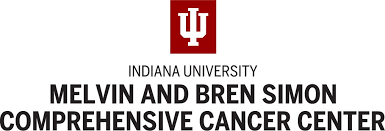
The Goodwill of Strangers Helps Build a Unique Resource for Cancer Research

Thousands of women have made the selfless choice to literally donate a precious piece of themselves by giving a breast tissue sample to the Susan G. Komen Tissue Bank at the Indiana University Melvin and Bren Simon Cancer Center, a unique resource for researchers worldwide.
We know that advances against cancer are made through research, and that individuals can help by participating in clinical trials. But why do individuals decide to help researchers?
Thousands of women have made the selfless choice to literally donate a precious piece of themselves by giving a breast tissue sample to the Susan G. Komen Tissue Bank at the Indiana University Melvin and Bren Simon Cancer Center, a unique resource for researchers worldwide.
As I read through the hand-written notes in pink journals in our offices, I quickly see a common theme emerge as to why these women have decided to donate to the tissue bank:
- “I wanted to do my part to help rid this horrible disease that has affected so many.”
- “I am donating today because I am a firm believer in research and the benefits it could bring.”
- “I want to be a part of helping find a cure. It’s so important for the next generation.”
- “I’m donating to help find a cure.”
- “I hope this research finds a cure so no other family has to experience this loss.”
- “I am happy to donate to help in advancing breast cancer research and treatment.”
- “If a little time and piece of me can help to save someone’s life, it’s a very low cost with a tremendous reward.”
- “I am thrilled to be able to help with such an important study.”
These are just a few of the heartfelt notes left by women who participated in the tissue bank’s sample collection in Houston in February. In all, 160 women of different ages and ethnic groups turned out to donate to the Komen Tissue Bank.
Their notes are memorable, as is the conversation I had with a 91-year-old woman while in Houston. She said, “Everyone should do this. It’s our duty.”
My colleagues and I from the tissue bank, and a few volunteers who paid their own way, traveled to Houston because of its diverse demographics.
In the past, we have collected tissue from women from our home in Indianapolis and a handful of other towns and cities in Indiana as well as Chicago; Louisville, Kentucky; and Orange County, California. We want the tissue bank’s samples to represent a diverse group of women representative of the population of the United States. The need to obtain samples from Asian and Hispanic women remains high on our priority list.
Tumor Bank’s Mission
To my amazement, more than 4000 women have donated samples since the tissue bank began in 2007. In all, more than 10,000 women also have donated DNA and blood to the Komen Tissue Bank.
The tissue bank is the only normal breast tissue biorepository of its kind in the world. As such, it is uniquely positioned to characterize the molecular and genetic basis of normal breast development and compare it with the different types of breast cancer. The bank was established expressly for the acquisition of normal tissue samples—breast tissue, (frozen and formalin-fixed), serum, plasma, and DNA—from volunteer donors with no clinical evidence of breast disease and/or malignancy, providing a resource to investigators around the globe.
By using samples from women without breast cancer, researchers will be able to determine the differences between healthy and cancerous tissues, which will lead to a better understanding of the disease.
How the Process Works
During the donation process, a tissue sample is taken from one breast with local anesthesia and a needle. The amount of tissue taken is about 1 gram. A trained surgeon or radiologist performs a core needle biopsy with an ATEC vacuum-assisted device. The samples are processed immediately on-site to ensure consistent and high-quality samples.
The tissue bank is a resource for investigators around the globe. Colleagues from Purdue University, Mayo Clinic, the National Cancer Institute, Yale University, Dartmouth College, Dana-Farber Cancer Institute/Harvard University, Breakthrough Research Centre at The Royal Marsden Hospital in Great Britain, and the University of Queensland in Australia have already tapped into the bank for their research studies.
Researchers are able to submit proposals to use the samples in the tissue bank for their investigations. Proposals are accepted three times a year. Additionally, researchers can access the Virtual Tissue Bank, where raw data have been returned from research already conducted and linked to donor barcodes and medical history annotation.
Newsletter
Knowledge is power. Don’t miss the most recent breakthroughs in cancer care.















































































